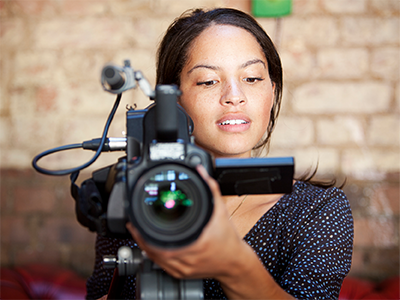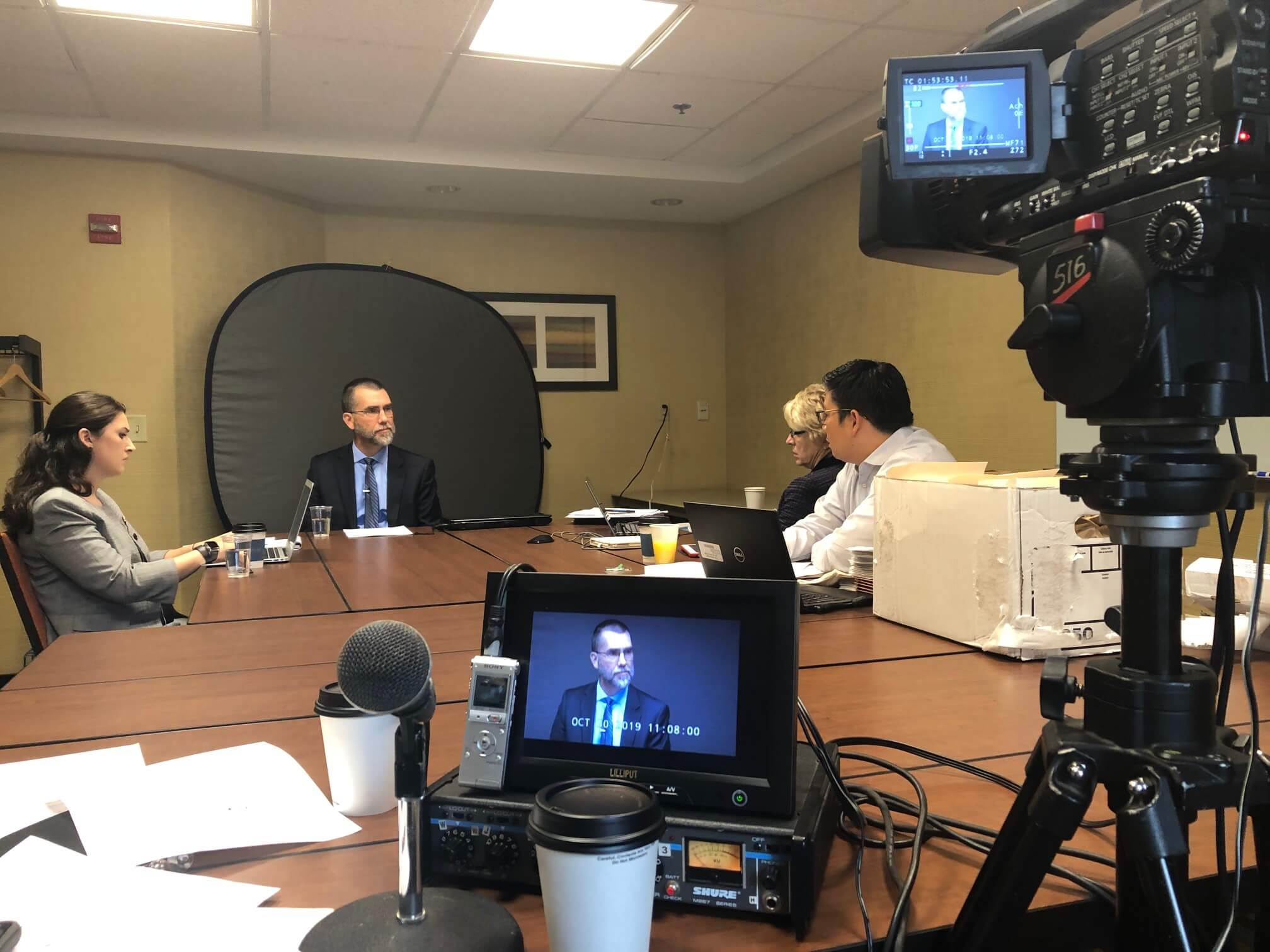The Duty of Legal Videography in Modern Legal Proceedings
The Duty of Legal Videography in Modern Legal Proceedings
Blog Article
Looking Into the Devices of Lawful Videography: Unveiling Its Operation in Shielding Genuine Visual Testament for Judicial Procedures
In the realm of judicial process, the role of legal videography stands as a keystone in preserving and providing visual proof. As modern technology continues to development, the devices behind lawful videography have actually become significantly intricate, providing an important layer of credibility to statements caught on video clip. By delving into the functional ins and outs of lawful videography, one can uncover the careful procedures that protect the honesty of visual proof presented in court rooms - Legal Videography. This exploration not just clarifies the historic development of lawful videography however also means the future trends that may further reinvent exactly how visual testaments are maintained in the realm of justice.
Historic Advancement of Lawful Videography
Analyzing the historical progression of lawful videography discloses a considerable improvement in the capturing and discussion of visual proof within the legal landscape. In the past, lawful process greatly depended on created photographs and records to record occasions and provide evidence. With the arrival of video technology, the legal sector saw a standard change in how aesthetic testimony was caught and offered.
The advancement of legal videography can be traced back to the late 20th century when advancements in video clip recording tools made it a lot more accessible for usage in court rooms. This technological improvement not just enhanced the accuracy and dependability of aesthetic proof yet also changed the means instances were provided to courts and courts (Legal Videography). Lawyers began to acknowledge the influential power of video clip recordings in conveying emotions, subtleties, and non-verbal cues that written photos or records alone might not capture successfully

Technology Advancements in Video Documentation
What vital technological innovations have reinvented video clip documentation in the legal field? The legal field has actually seen substantial innovations in video clip documents modern technology that have actually improved the authenticity and integrity of aesthetic proof in judicial proceedings. Among the crucial developments is high-def (HD) video recording capacities, which provide crystal-clear pictures and sharp details that are critical for precisely catching testaments, facial expressions, and other aesthetic signs. Additionally, the assimilation of timestamping and metadata attributes in video clip documentation tools has made it possible for exact documents of when and where the video was recorded, making certain the integrity of the evidence presented in court.
In addition, improvements in video clip security and watermarking innovations have actually bolstered the safety and security and tamper-proof nature of video clip evidence, safeguarding it against unauthorized alterations or meddling. The advent of cloud storage solutions and remote access capabilities has streamlined the storage, retrieval, and sharing of video clip evidence, helping with seamless partnership amongst lawful experts and making sure effective access to critical visual statements when needed. These technological improvements in video clip paperwork have unquestionably revolutionized the lawful area, improving the precision, credibility, and admissibility of visual evidence in judicial proceedings.
Function of Lawful Videographers in Courtroom Settings
The advancement of video documents innovation in the lawful field has actually demanded a crucial function for lawful videographers in court room settings, guaranteeing the honesty and reliability of aesthetic testaments offered throughout judicial proceedings. Lawful videographers play an essential role in capturing and protecting exact aesthetic evidence that can be essential in lawsuit. Their responsibility reaches setting up devices, tape-recording process, and generating top notch videos that accurately reflect the events in the court.
Furthermore, legal videographers often work very closely with lawful groups to guarantee that the video evidence straightens with the situation's requirements and can be efficiently offered in court to sustain the lawful debates being made. In general, the function of legal videographers in courtroom setups is vital in get redirected here supporting the principles of justice and guaranteeing the openness of lawful process. Legal Videography.

Ensuring Admissibility and Integrity of Video Evidence
To preserve the integrity of visual evidence presented in lawful proceedings, guaranteeing check out this site the admissibility and stability of video evidence is an important responsibility for legal videographers. Admissibility refers to the acceptance of proof by the court, and for video proof to be acceptable, it must satisfy specific standards. Legal videographers play a crucial role in guaranteeing that the videos they capture abide by the guidelines of evidence, such as relevance, reliability, and credibility.
Integrity of video clip proof entails maintaining the creativity and accuracy of the video from the moment it is recorded until it exists in court. This consists of firmly storing the video documents, recording the chain of safekeeping, and preventing any kind of tampering or alterations. Legal videographers need to abide by strict methods to guarantee the stability of the video evidence and stop any obstacles to its credibility.
Future Trends in Legal Videography
Offered the increasing reliance on technology in legal process, legal videographers are positioned to embrace innovative improvements forming the future of aesthetic testament capture and discussion. One of the popular patterns on the horizon is the integration of online fact (VIRTUAL REALITY) and augmented truth (AR) innovations into lawful videography. These technologies have the prospective to transform how aesthetic proof is provided in courts, enabling judges and courts to submerse themselves in the scene of the crime or occurrence.
Additionally, making use of fabricated knowledge (AI) algorithms for video clip analysis is expected to improve the procedure of evaluating and evaluating big amounts of video clip footage. AI can assist in recognizing essential minutes, abnormalities, and patterns within video clips, boosting the performance of lawful examinations.

Verdict
Finally, legal videography has played an essential function in giving genuine visual proof for judicial procedures. With technical developments and the knowledge of lawful videographers, the honesty and admissibility of video clip evidence are made sure in court room setups. As legal videography remains to advance, it will certainly be vital to support standards that preserve the accuracy and dependability of aesthetic statement for the future of legal proceedings.
Examining the historic progression of lawful videography reveals a significant improvement in the catching and presentation of visual evidence within the lawful landscape.The evolution of video paperwork technology in the legal field has actually necessitated a crucial duty for legal videographers in court room setups, guaranteeing the integrity and dependability of visual testimonies offered throughout judicial proceedings. In addition, legal videographers usually work carefully with lawful groups to make certain that the video evidence straightens with the case's demands and can be effectively presented in court to support the legal debates being made.To keep the credibility of aesthetic proof offered in legal procedures, ensuring the admissibility and stability of video clip evidence is a crucial responsibility for lawful videographers. As lawful videography continues to evolve, it will certainly be necessary to promote criteria that keep the accuracy and integrity of visual testament for the future of legal procedures.
Report this page